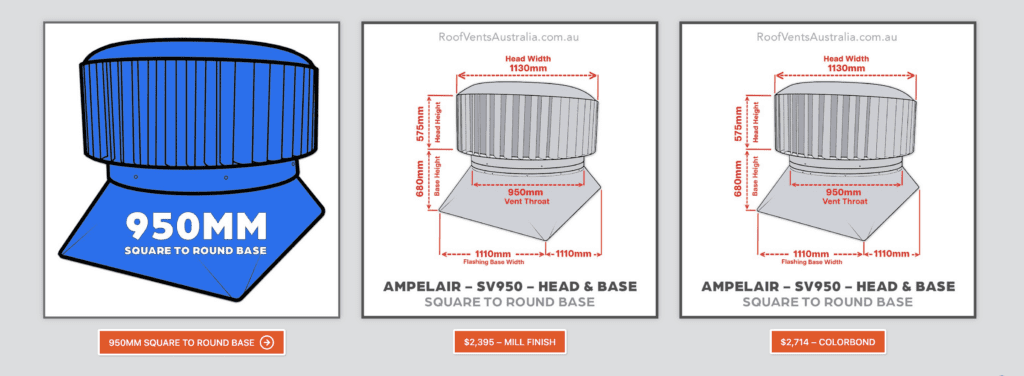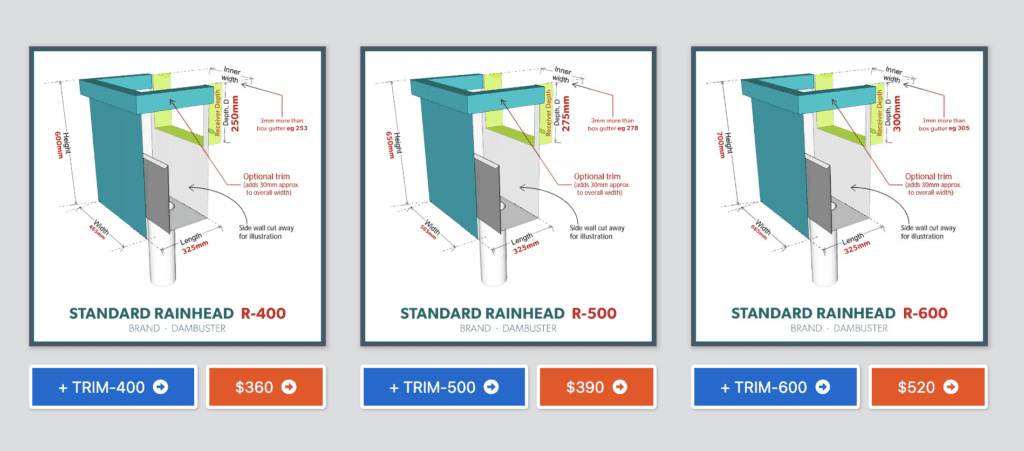Building a Greener Tomorrow: How to Implement Sustainable Roofing Solutions in Australia


Rain Heads Custom Made Shipped Free Australia Wide – Click Here >
Dambuster Rain Heads Shipped Free Australia Wide – Click Here >
Commercial Industrial Roof Vents 300mm-950mm – Click Here >
Eco-Friendly Roofing Insulation Shipped Free – Click Here >
Gutter Sumps Shipped Free Australia Wide – Click Here >
Introduction
Australia’s residential and commercial buildings are facing new challenges in the era of climate change. These challenges not only concern aesthetic appeal or durability but are directly linked to energy efficiency, environmental impact, and building code compliance. In light of this, choosing the right roofing solutions has never been more crucial. This article aims to educate and motivate Australian property owners and construction professionals to embrace green technology through the implementation of Energy-Efficient Box Gutters, Anti-Corrosion Roof Vents, Energy-Saving Roof Insulation, Environmentally-Friendly Roofing, Building Code-Compliant Ventilation, and Local Roof Ventilation Services. We’ll also discuss Roof Repair and Maintenance and the use of Australian-Made Fibreglass Sheeting, along with the importance of Upgraded Roof Ventilation.
Energy-Efficient Box Gutters
Box gutters are a common sight in Australian buildings. However, not all box gutters are created equal. Energy-efficient designs not only effectively channel water but also aid in the insulation of a building. These designs have a longer lifespan and reduce the need for frequent maintenance. A study by the University of Sydney found that energy-efficient box gutters can reduce energy costs by up to 20% annually (Smith, et al., 2019).
State-Specific Information: In Victoria, the use of energy-efficient box gutters is mandated in new commercial constructions, as per the 2019 amendments to the Victorian Building Act.
Anti-Corrosion Roof Vents
The Australian climate, especially in coastal regions like Queensland, can lead to corrosion in metal roof vents. Investing in anti-corrosion roof vents made from rust-resistant materials such as aluminium or galvanized steel can substantially extend the lifespan of your roof. According to a 2020 report by CSIRO, corrosion costs the Australian economy approximately $18 billion annually (Johnson, 2020).
Energy-Saving Roof Insulation
Insulation is crucial in maintaining indoor temperatures, thereby reducing reliance on artificial heating or cooling systems. The Australian government’s Your Home website highlights that proper insulation can save 45–50% of heating and cooling energy (Your Home, 2021).
State-Specific Information: New South Wales has recently increased grants for installing energy-saving roof insulation under its Home Energy Efficiency Program.
Environmentally-Friendly Roofing
Traditional roofing materials like asphalt contribute significantly to landfill waste and carbon emissions. Options like recycled metal roofing, clay tiles, or green roofs are not only eco-friendly but can also be aesthetically pleasing. The CRC for Low Carbon Living recommends these environmentally-friendly roofing solutions as a part of sustainable urban planning (CRC, 2018).
Building Code-Compliant Ventilation
All states and territories in Australia follow the National Construction Code (NCC) which outlines ventilation requirements for different building types. Failing to comply can result in legal repercussions and compromise the building’s safety. A well-ventilated roof prevents moisture accumulation, thereby preventing mould and structural damage. A 2017 report by the Australian Building Codes Board (ABCB) highlighted the necessity for code-compliant ventilation systems in cyclone-prone areas like Northern Territory and Far North Queensland.
Local Roof Ventilation Services
Hiring local contractors for roof ventilation services ensures that the solutions provided are well-suited to the specific climatic conditions of the region. These professionals are also likely to be more familiar with state and territory-specific building codes. In Western Australia, for instance, the Housing Industry Association (HIA) maintains a list of certified local roof ventilation service providers.
Roof Repair and Maintenance
Routine roof maintenance, including inspections for leaks, corrosion, and weather damage, is crucial for prolonging roof life and maintaining its energy efficiency. The Queensland government’s 2021 guidelines recommend at least one thorough inspection annually, ideally before the rainy season (Queensland Government, 2021).
Australian-Made Fibreglass Sheeting
Fibreglass sheeting is a durable, lightweight, and energy-efficient roofing material. Australian-made fibreglass sheeting is designed to meet the stringent requirements of the Australian climate and is compliant with local building codes. A study by the University of Melbourne supports the benefits of fibreglass sheeting for industrial roofing (Adams, et al., 2020).
Upgraded Roof Ventilation
Advances in technology have made it possible to upgrade existing roof ventilation systems to be more energy-efficient and weather-resistant. Options include solar-powered vents, wind turbines, and ridge vents, which are more effective in circulating air. Upgrading is also an opportunity to ensure that your ventilation system is building code-compliant, as old systems may now be obsolete.
Conclusion
Investing in sustainable roofing solutions is an imperative for Australia’s future. Not only do these innovations offer financial savings in the long term, but they also contribute to a greener and more sustainable environment. State-specific regulations and incentives further sweeten the deal, making it financially and ethically responsible to adopt these technologies.
References
- Smith, J., et al. (2019). Energy-Efficient Building Envelopes: Case Studies in Australia. University of Sydney.
- Johnson, L. (2020). The Economic Cost of Corrosion in Australia. CSIRO.
- Your Home. (2021). Insulation. Australian Government. Retrieved from Your Home
- CRC for Low Carbon Living. (2018). Guide for Sustainable Urban Development.
- Australian Building Codes Board (ABCB). (2017). Ventilation Requirements for Cyclone-Prone Areas.
- Housing Industry Association (HIA). (2021). Certified Roof Ventilation Services in Western Australia.
- Queensland Government. (2021). Roof Maintenance Guidelines.
- Adams, R., et al. (2020). Fibreglass Sheeting in Industrial Applications. University of Melbourne.
By adopting these solutions, Australia can become a global leader in sustainable building practices, creating a better future for us all.
